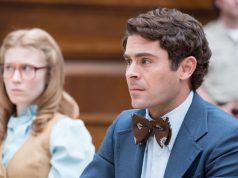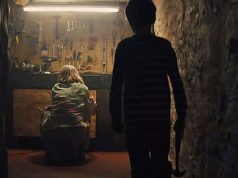The identity of “Identity” remains a secret for most of the film’s running time. Mystery? Psychological thriller? Slasher film? None of the above? The film cleverly keeps its audience off-balance without violating its own rules or using cheap tactics. When it’s over, it makes perfect sense, and further reflection on the film’s details only enhances that perception. This is an excellent whatever-it-is.
Eleven people, most of them strangers to each other, are stranded by a vicious rainstorm at a motel in the Nevada desert. One of them is a convicted murderer (Jake Busey) being transported to a sanity hearing; inevitably, he escapes and people begin to die.
With the dark-and-stormy-night setting and systematic bumping off of the characters — each one is even identified with a numbered room key — it seems like a gorier version of Agatha Christie’s “Ten Little Indians.” But the film also examines the nature of coincidence and the connections strangers have with each other, a la “Magnolia” or “Run Lola Run.”
Information is often revealed in a non-linear fashion, too, taking us back in time to see events from different points of view. Fans of TV’s “Boomtown” will recognize this device.
And so the film, directed by James Mangold (“Girl, Interrupted”) is tantalizingly difficult to categorize. It’s not that it has randomly slapped together elements of several genres. Instead, it’s a zealous effort on the part of the screenwriter, Michael Cooney, to avoid predictability. There is no clear plot destination, and that is not due to a lack of focus, but an intentional effort to keep us from knowing what’s going to happen.
Slowly, we recognize the straightforward serial killing is anything but straightforward, as the film begins playing subtle mind tricks on us. Why does the cop (Ray Liotta) have blood on his back? Why does the desk clerk (John Hawkes) hate prostitutes so much? Hints are dropped all over the place; the genius of the film is that you don’t realize they were hints until after the fact.
Other possibilities for the deaths — including supernatural forces and even, heaven help us, an ancient Indian burial ground — are introduced. It would be unfair to indicate which elements in the film prove to be red herrings and which prove to be important. From a certain standpoint, everything in the film means something, because it comes from — well, I have said too much already.
John Cusack, who I’m now convinced can play anything, plays Ed, a limo driver whose collision with a woman (Leila Kenzle) sets the early events in motion. His performance is strong and marked by grim humor. John C. McGinley is strangely effective as the accident victim’s distraught husband; the rest of the cast (which includes Amanda Peet and Clea DuVall) is serviceable. This smart, original thriller deserves an audience.
A- (1 hr., 27 min.; )
In 2012, I reconsidered this movie for my Re-Views column at Film.com.





